Understanding the claims process in car insurance is a crucial yet often misunderstood aspect of vehicle ownership. Understanding your policy’s specifics forms the foundation of a smooth claims experience.
From reporting the incident promptly and accurately, to documenting the damage and working with an adjuster, each step plays a pivotal role in the outcome of your claim. However, it’s the nuances, such as how to effectively review an assessment or dispute a claim decision, that can greatly influence the final compensation.
This discussion aims to dissect these processes, shedding light on the intricacies that can make or break your claims experience, and ultimately, how you receive your payout.
What often goes overlooked, however, are the post-claim considerations that can impact your future premiums and coverage.
Understanding Your Policy
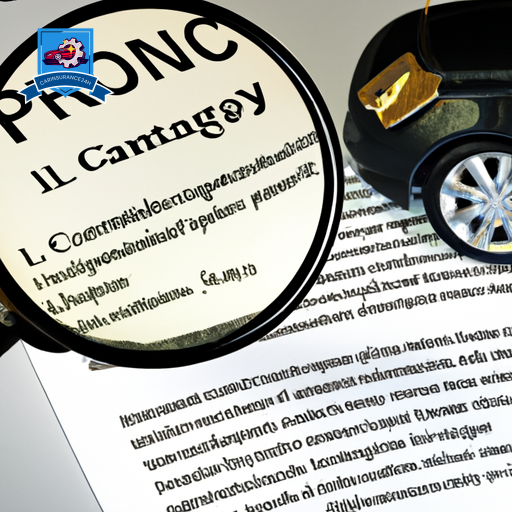
Before maneuvering the complexities of the car insurance claims process, it is paramount to have a thorough understanding of your policy’s coverage, limitations, and exclusions. This foundational knowledge serves as the bedrock for successfully navigating through claims submission and resolution.
Insurance policies meticulously outline the scope of coverage, which is vital in determining the extent of protection afforded to policyholders in various scenarios. Coverage limits, explicitly stated in the policy documents, define the maximum amount an insurer will pay for a covered loss. These limits play a crucial role in financial planning and risk management, as they directly influence out-of-pocket expenses in the event of a claim.
Equally vital are policy exclusions, which delineate circumstances under which coverage is not provided. Common exclusions may include damages resulting from normal wear and tear, intentional acts, or the operation of the vehicle under the influence of drugs or alcohol. Understanding these exclusions is crucial to set realistic expectations and avoid surprises during the claims process.
It is advisable for policyholders to engage in proactive communication with their insurance providers. Clarifying doubts and seeking explanations for complex policy terminologies can illuminate obscure clauses, ensuring that policyholders are not left in the dark regarding their coverage nuances.
Reporting the Incident

Once an individual is involved in an automotive accident, it is essential to promptly report the incident to their insurance provider. Immediate reporting not only initiates the claims process but also plays a critical role in the management of potential legal implications. It is vital to understand that the timing of the report can have a major impact on the outcome of the claim, as insurance companies often have specific time frames within which an incident must be reported to ensure coverage.
Upon contacting the insurance company, the policyholder should be prepared to provide a clear and detailed account of the incident. This includes the time, location, and circumstances surrounding the accident, as well as any emergency response actions taken. The involvement of law enforcement or emergency medical services can be particularly relevant, as official reports from these entities can serve as valuable documentation for both the insurance claim and any legal proceedings that may follow.
It is also important for individuals to be aware of the legal implications related to reporting an accident. In many jurisdictions, failure to report an automotive accident to the authorities, especially if it involves injuries or significant property damage, can result in legal penalties. Additionally, accurately reporting the incident to the insurance provider is crucial to avoid the potential for claims of fraud or policy violations, which can have serious consequences.
Documenting the Damage
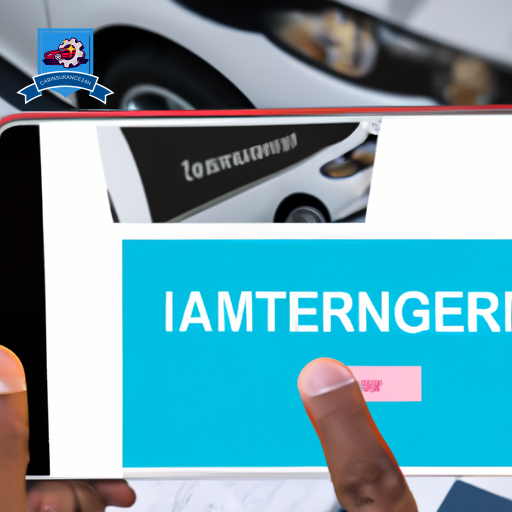
Following the initial reporting of an incident, documenting the damage incurred is a critical step in the car insurance claims process.
This involves capturing thorough photographs of the damage, compiling detailed repair estimates from professionals, and recording the specifics of the incident for accurate claim submission.
Each of these actions guarantees that the claim is supported by clear, concrete evidence, facilitating a smoother resolution process.
Capture Damage Photographs
Documenting the damage through capturing detailed photographs is a critical step in the car insurance claims process. High-quality images serve as undeniable evidence, helping insurers assess the extent of the damage accurately. To make sure the photographs adequately represent the damage, consider the following:
- Lighting tips: Opt for natural light and avoid direct sunlight, which can cast shadows and obscure details.
- Background selection: Choose a simple, uncluttered background to avoid distractions from the damage.
- Multiple angles: Capture the damage from various angles to provide a thorough view.
- Close-ups and wide shots: Include close-up shots to highlight specific damage and wide shots to show the damage in context.
Adhering to these guidelines will streamline the claims process, facilitating a smoother resolution.
Compile Repair Estimates
After capturing detailed photographs of the damage, obtaining repair estimates from reputable auto shops becomes the next critical step in the car insurance claims process. This step is pivotal for insurers to gauge the extent of damage and determine the compensation amount accurately. Selecting certified repair workshops that specialize in the type of damage your vehicle has sustained is vital. These workshops are equipped with the necessary expertise and tools to provide precise estimates, ensuring estimate accuracy.
Additionally, compiling multiple estimates can help in comparing costs and services, offering a thorough view of the repair scope needed. This due diligence not only aids in speeding up the claims process but also guarantees that you receive a fair and just settlement from your insurance provider.
Record Incident Details
Recording every detail of the incident is a crucial step in the car insurance claims process, as it provides a foundation for evaluating the damage accurately. Documenting the damage thoroughly guarantees that all parties involved have a clear understanding of the incident’s impact, which is essential for a fair and efficient claims resolution.
To enhance the documentation process, consider including:
- Photographs of the damage from multiple angles to capture the extent of physical harm.
- Witness statements that corroborate the sequence of events and provide additional perspectives.
- A detailed description of the incident, including the exact location and time.
- Traffic conditions at the time of the accident, which may influence the understanding of how the incident occurred.
This structured approach ensures a detailed record, aiding in the claims process.
Filing Your Claim
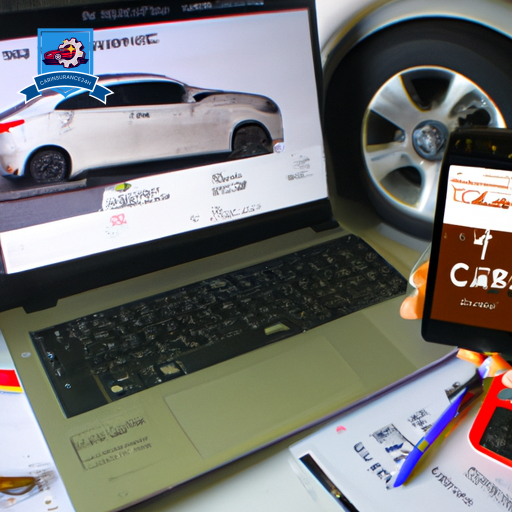
When initiating a car insurance claim, it is essential to promptly contact your insurance provider to report the incident. Understanding the claim deadlines and being aware of any policy exceptions are critical steps in this process. Insurers typically set clear deadlines for when a claim must be filed following an accident, and failing to adhere to these deadlines can result in the denial of your claim.
While each insurance company has its own procedures, the filing process generally involves providing a detailed account of the incident, including the date, time, location, and a description of what happened. You may also need to submit any evidence you collected at the scene, such as photos or a police report. It’s important to gather and organize all necessary documentation promptly to guarantee a smooth claim process.
To make this information more digestible, here is a table summarizing the key steps:
| Step | Description |
|---|---|
| Contact Insurance | Promptly report the incident to your insurance provider. |
| Understand Deadlines | Be aware of the claim filing deadlines and policy exceptions. |
| Gather Documentation | Collect all relevant documents, such as photos, a police report, and details of the incident. |
| Submit Claim | Provide a detailed account of the incident and submit all necessary documentation to your insurer. |
Working With an Adjuster
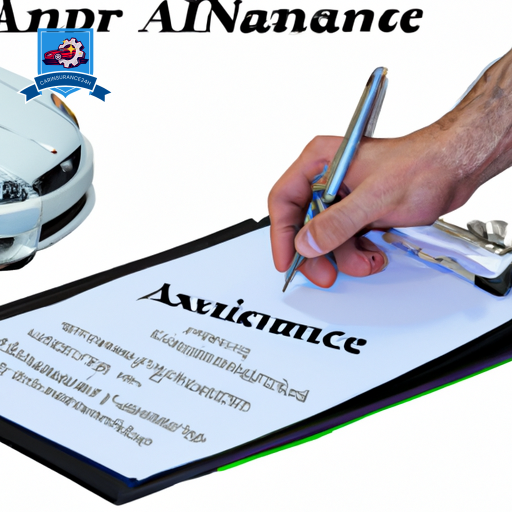
After filing your insurance claim, the next critical step involves working with an adjuster, a key figure in determining the outcome of your claim.
Understanding the adjuster’s role is essential, as they assess the damage and estimate repair costs.
Preparing for their assessment can greatly influence the processing time and accuracy of your claim.
Adjuster Role Explanation
Understanding the role of an insurance adjuster is important in maneuvering the car insurance claims process effectively. Adjusters are professionals tasked with evaluating the details of a claim to determine the insurance company’s liability. Their role encompasses a broad range of activities, from examining the damage on a vehicle to appraising any injuries sustained during the incident.
Key aspects of their role include:
- Appraising claim validity: Determining whether a claim is legitimate based on evidence and policy terms.
- Estimating damages: Estimating the cost of repairs or replacement.
- Negotiation: Engaging in negotiation tactics to settle claims.
- Documentation: Compiling detailed reports on findings and decisions.
Their qualifications typically include specific training in claims adjustment, alongside an understanding of automotive repair and legal aspects of insurance claims.
Preparing for Assessment
Having explored the adjuster’s role in evaluating car insurance claims, the next step involves preparing effectively for the assessment process to ensure a smooth collaboration with the adjuster.
Essential to this preparation is the creation and maintenance of an emergency kit for accident scene safety. This kit should include items such as a first aid kit, a flashlight, and a camera or smartphone for taking photos of the accident scene and vehicle damages. Documenting the scene immediately can provide critical evidence for the adjuster.
Additionally, ensuring personal and public safety around the accident scene prevents further incidents and liabilities. Accurate and thorough documentation aids the adjuster in making a fair assessment, streamlining the claims process for all parties involved.
Reviewing the Assessment
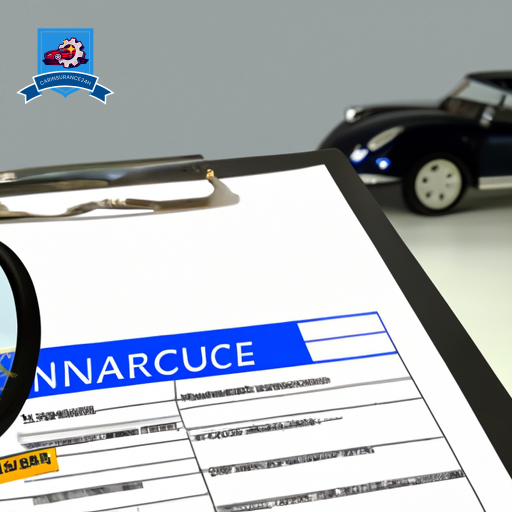
Upon receiving the assessor’s report, it is imperative to meticulously review the assessment to guarantee accuracy and fairness in the evaluation of your car insurance claim. The assessment process is a critical step in determining the outcome of your claim, and any inaccuracies or oversights can have a notable impact on the resolution. Hence, understanding and scrutinizing every detail is essential for a just assessment of the damage and the subsequent compensation.
When reviewing the assessor’s report, it is important to keep in mind:
-
Assessment Delays: Be aware of any unjustifiable delays in the assessment process. Delays can often be a sign of problems in the evaluation procedure or a lack of necessary information, which might affect the fairness and timeliness of your claim’s resolution.
-
Accuracy of the Report: Verify that all damages are accurately documented and that the repair costs align with the damage’s severity. Any discrepancies should be noted for further discussion.
-
Independent Evaluators: Consider seeking a second opinion from independent evaluators if there are doubts about the assessment’s impartiality or thoroughness. This can provide an additional layer of verification to ensure the assessment’s fairness.
-
Documentation and Evidence: Make sure that all the documentation, photographs, and evidence supporting the claim are correctly reflected in the assessor’s report. Missing or inaccurately represented information could affect the claim’s outcome.
Disputing the Claim Decision

After carefully reviewing the assessment and identifying potential inaccuracies or areas of disagreement, disputing the claim decision may become the next necessary step in ensuring fair compensation for damages. This process can seem intimidating, but understanding your rights and the mechanisms available for dispute resolution can greatly ease the process.
Initially, policyholders should formally communicate their concerns to the insurance company, presenting any new evidence or documentation that supports their claim. This can include additional photographs of the damage, repair estimates that differ from those provided by the insurer’s assessor, or any relevant witness statements. It is important to maintain a record of all communications during this phase for future reference.
Should these initial attempts not resolve the dispute to the policyholder’s satisfaction, seeking legal representation becomes a viable next step. A lawyer specializing in insurance claims can offer invaluable advice on the merits of the case and the best course of action. They can also represent the policyholder in any negotiations or legal proceedings, providing a level of expertise and negotiation skills that can greatly enhance the chances of a favorable outcome.
Another option to contemplate is alternative dispute resolution (ADR), such as mediation or arbitration. These methods provide a less formal, often quicker, and usually less costly means of resolving disputes than going through the courts. A neutral third party will facilitate discussions between the policyholder and the insurer, aiming to reach a mutually acceptable agreement. ADR can be a particularly effective approach when both parties are open to compromise but need assistance to bridge the gap between their positions.
Receiving Your Payout

Once the insurance claim is approved, policyholders can anticipate the initiation of the payout process to compensate for the covered damages. The amount and method of payout can vary depending on the specifics of the policy and the nature of the claim. It’s important for policyholders to understand the factors that influence the final payout, such as deductible impact and coverage limits. These elements play a significant role in determining the net amount received after a claim.
-
Deductible Impact: Before the insurance company pays out for a claim, the policyholder is required to pay a deductible. This is a predetermined amount outlined in the policy details. The deductible amount directly impacts the payout, as it is subtracted from the total settlement amount. For example, if the total damages amount to $5,000 and the deductible is $500, the net payout would be $4,500.
-
Coverage Limits: The maximum payout is capped by the policy’s coverage limits. Regardless of the total cost of damages, the insurance will only pay up to the limit specified in the policy. It’s important to select appropriate coverage limits when purchasing insurance to guarantee adequate protection.
-
Method of Payout: Insurers may offer different methods of payout, such as direct deposit, check, or payment to a third-party provider (in the case of auto repairs).
-
Timeline for Payout: Each insurer has its own timeline for processing payments. Understanding this timeline is important for financial planning following an accident or loss.
Understanding these aspects can help policyholders manage their expectations and navigate the payout process more effectively.
Post-Claim Considerations
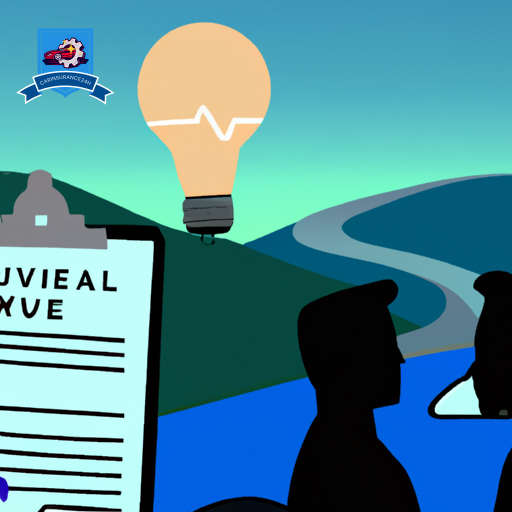
Handling the aftermath of a claim, policyholders frequently confront several considerations that can affect their insurance status and future premiums. One immediate concern often revolves around mobility, especially if the policyholder’s vehicle requires repairs or has been totaled. In such cases, understanding the specifics of rental car options provided under the policy becomes paramount. Insurance policies may offer different levels of coverage for rental vehicles, including daily limits and total coverage duration. It’s essential for policyholders to review their policy details or speak with their insurance representative to make sure they fully understand their entitlements and any potential out-of-pocket costs.
Beyond the immediate need for a substitute vehicle, policyholders should also be mindful of how a claim might influence their policy renewal considerations. The nature and frequency of claims can significantly impact future premiums. For instance, policyholders who have made multiple claims within a short period may be viewed as higher risk, potentially leading to increased premium rates at renewal time. Additionally, some insurers might decide not to renew a policy based on a policyholder’s claims history. It’s important for policyholders to engage in open discussions with their insurers about how a recent claim may affect their policy status and costs moving forward.
Additionally, this period offers an opportune moment for policyholders to reassess their coverage needs. Evaluating whether the current policy provides adequate protection or if adjustments are needed can help make sure that the policyholder is appropriately covered for future incidents. This evaluation may include considering changes to deductibles, coverage limits, or even exploring options with other insurers to find the most suitable and cost-effective insurance solution.
Frequently Asked Questions
How Do Insurance Companies Determine if a Car Is a Total Loss or if It Will Be Repaired?
Insurance companies determine whether a car is a total loss or repairable by applying total loss criteria and conducting a repair cost analysis. The assessment involves comparing the cost of repairs to the vehicle’s actual cash value. If repair expenses exceed a certain percentage of the vehicle’s value, typically determined by state regulations or company policy, the car is deemed a total loss.
Otherwise, it will be approved for repair.
What Are the Tax Implications of Receiving a Car Insurance Payout?
Exploring the maze of payout taxation reveals a nuanced landscape akin to evaluating investment income’s ebb and flow. When receiving a car insurance payout, the tax implications depend heavily on the nature of the payout.
Generally, compensatory payouts for physical damage or loss are not taxable. However, any payment surpassing the loss, potentially classified as income or investment gain, may be taxable.
It’s essential to consult tax professionals for tailored advice, considering these factors.
Can Filing a Car Insurance Claim Affect My Credit Score?
Filing a car insurance claim itself does not directly impact your credit score, as claims are not reported to credit bureaus. However, indirect effects might occur if the claim leads to payment delays or outstanding debts related to the vehicle or repair costs.
These financial discrepancies can be reported to credit reporting agencies, potentially affecting your credit score. It is important to manage any post-claim financial obligations promptly to avoid such impacts.
How Does a Car Insurance Claim Affect My Future Premiums?
Filing a car insurance claim can influence future premiums due to adjustments in perceived risk factors. Insurers evaluate claims history as part of premium calculations to determine the likelihood of future claims.
Generally, a history of claims suggests a higher risk level, potentially leading to increased premiums. However, the impact varies by insurer and specific circumstances surrounding the claim.
It is essential for policyholders to understand how their claims history might affect their insurance costs.
What Alternative Dispute Resolution Options Are Available if I’m Dissatisfied With the Claim Decision Beyond Formal Dispute?
Exploring alternative dispute resolution options offers a pathway to amicably resolve disagreements without resorting to formal litigation.
Mediation services and negotiation techniques stand out as effective solutions, providing a structured yet flexible environment for both parties to discuss their concerns and work towards a mutually acceptable resolution.
These methods not only facilitate a smoother negotiation process but also contribute to preserving relationships by encouraging open communication and understanding.
